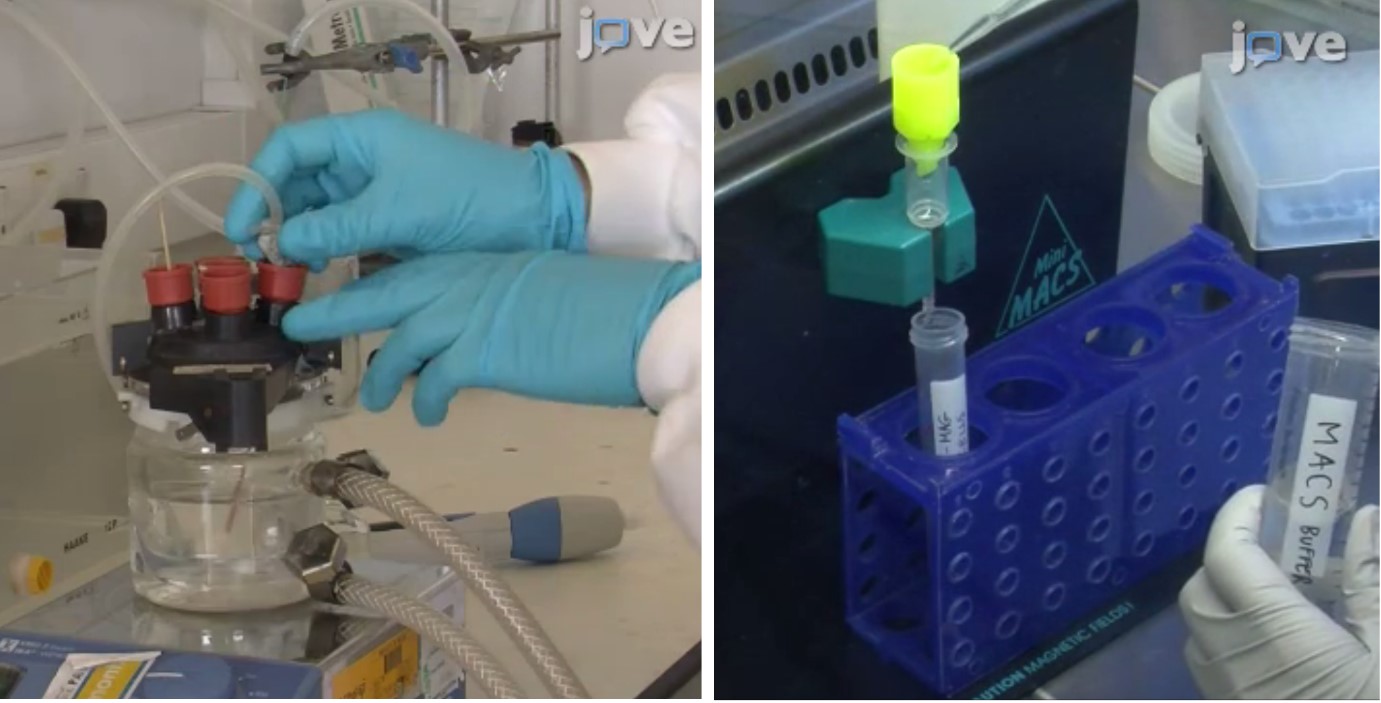After publishing a paper, Sara Carreira was approached by JoVE, a peer reviewed scientific video journal company, to see if she would be interested in presenting her work using a slightly different medium. Continue reading for Sara's account of the process and click here to see the video.
An innovative way of publishing your results - by Dr. Sara Carreira
As a BCFN student you are often thrown in at the deep end when it comes to learning a new method in a different discipline. A physicist genetically engineering bacteria in a microbiology lab? A biologist performing photolithography in the clean room? Sure! Stepping out of your comfort zone and working in an interdisciplinary environment requires bravery and a willingness to learn. If you are anything like me, you learn best if someone shows you how to do it. This is certainly possible in most labs, there will usually be senior colleagues who can demonstrate a technique that is established in their lab. But alas, you want to try a new method, maybe based on something that was previously published in a paper. And there you are now, mulling over the 3 liner in the “Methods” section referring to what you want to replicate. If only there was a video of those authors performing this method! Wouldn’t that be so much more helpful? In fact, those videos exist! I’ve heard about the Journal of Visualized Experiments (JoVE) a couple of years ago. JoVE’s mission is “to advance scientific research and education by increasing productivity, reproducibility, and efficiency of knowledge transfer for scientists, educators, and students worldwide through visual learning solutions”. Basically, they record scientists as they perform a series of techniques and then make a nice video of it, accompanied by a detailed written protocol.

I was approached by JoVE after publishing a paper in Nanoscale1, reporting on the synthesis and functionalisation of a protein-based magnetic nanoparticle (magnetoferritin), as well as on a rapid magnetic stem cells labelling protocol using those nanoparticles. The JoVE editor invited me to submit a detailed written protocol of my methods based on a template that JoVE uses, alongside an example protocol so I knew what level of detail was required (a lot!). I also included some representative results, which I could just re-print from my published paper. After editorial and peer-review, the fun part began: I was sent a “shot list”, exactly outlining how my written protocol would be transformed into a series of video clips. I was also asked to provide a few introductory and concluding sentences, which I would “present” to the camera at the beginning of the video. After the story board was completed, a local cameraman came along to take the shots. A good degree of preparation on my part was required to make the shooting go smoothly, because things like “incubate over-night to observe a colour change” are obviously not possibly to capture within a few hours of shooting. I had to prepare everything the day before so that I could demonstrate all the actions that I would usually spread over a good 2 weeks within just a few hours. After that, the cameraman put it all together and JoVE sent me a rough cut of the video for final edits. The final video was published in December 2016, so check it out (it’s open access)!
1. Correia Carreira, S., Armstrong, J. P. K., Seddon, A. M., Perriman, A. W., Hartley-Davies, R. & Schwarzacher, W. Ultra-fast stem cell labelling using cationised magnetoferritin. Nanoscale 8 (14), 7474-7483, doi:10.1039/C5NR07144E (2016).
